What Are Nepenthes
Nepenthes are also known as Tropical Pitcher Plants, Monkey Cup or Periuk Kera in Bahasa Malaysia. They are known for their beautiful “pitchers” but it is their carnivorous nature that intrigues people.

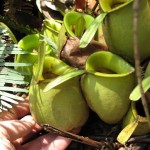
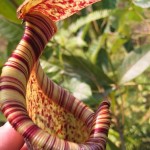
Tropical Pitcher Plants have vines and their stems can reach 10 meter in length. Most species produce 2 types of pitchers. They are called lower pitchers and upper pitchers. Lower pitchers are produced when the plant has not started to vine and they usually rest on the ground. The pitchers are more globose and contain more pitcher fluid. The upper pitchers are more funnel shape or cone shape as the plant start to vine. If you are not familiar with pitcher plants, you might think there are two different species in a same location. But when you look closer you’ll notice that the pitchers come from the same plant. (more…)
WHAT ARE SARRACENIA
Sarracenia or American Pitcher Plants are known for their tall trumpet-shaped pitchers that comes in a variety of colors depending on its species. They are also known for their brilliant flowers. This is in addition to the fact that they are carnivorous. Their leaves are modified into a pitcher tube or trumpet shape and it grows from the rhizome of the plant on the ground. They do not have stems or vines. The pitchers of an American Pitcher Plant can grow over 1 meter tall.
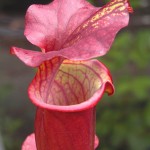
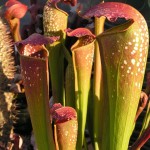
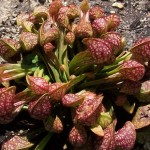
The leaves of most species survive only one year and die back to the ground during winter when they go into dormancy. (more…)
WHAT ARE DARLINGTONIA
Darlingtonia or Cobra Lily is a unique carnivorous plant; unique because they actually look like snakes. The head of the Cobra Lily trap has a puffed hood that looks like a snake’s head with a fishtail appendage growing from the opening of the trap just like a snake’s tongue. Its tubular leaves grow in a gradual twisted fashion giving an impression of a snake crawling on the ground.

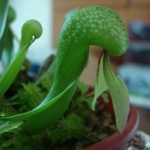
These plants have the ability to produce runners (stolons) where new plants emerge. The Cobra Lily plant is a monotypic genus, meaning there is only one species. (more…)
WHAT ARE CEPHALOTUS
Cephalotus or more commonly known as Albany Pitcher Plants or Australian Pitcher Plant are monotypic plants, meaning there is only one species in this genus. The name Cephalotus translate as “the sac-bearing, headed one” referring to the structure of the flower and leaf.
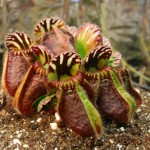


They are small plants that produce elaborate designed pitchers with bright reddish coloration about 1-3 inches high. This is a very rare plant in cultivation and very much sought after by plant enthusiasts.
Australian Pitcher Plants produces 2 types of leaves. During spring when the days are longer, they produce non-carnivorous leaves, but in summer they produce traps that capture insects. The plant slows down its growth or completely stops its growth entirely during winter. (more…)
WHAT ARE HELIAMPHORA
Heliamphora or Sun Pitchers are related to American Pitcher Plants (Sarracenia) and Cobra Lily plant (Darlingtonia). They are perennial plants and grow on the cool and mysterious mountains of the “tepuis”. They produce simple, stiff and brittle bell-shaped pitchers that look like a rolled-up leaf joined by a seam at the front. The pitcher bears a small spoon-like lid positioned over the pitcher mouth. Nectar is produced at the lid to attract insect. This is known as the nectar spoon.
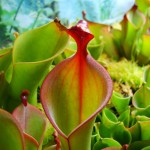
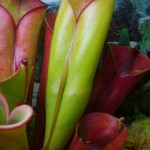
The upper interior walls of the pitchers are covered in fine, bristly, downward-pointing hairs just like American Pitcher Plants. (more…)
WHAT ARE DROSERA
Drosera or Sundews are a group of beautiful carnivorous plants. However, they do not produce “pitchers” to capture insects but uses an active glue trap much like a fly paper trap. The tentacle-covered leaves come in various shapes and forms making them a very interesting plant to cultivate and collect. At the end of each tentacle the plant produces a droplet of sticky substance that looks like morning dew when the sun shines on it, thus the name Sundews. The droplets of “dews” promise sweet delicious nectar to unsuspecting insects. They can be as small as 1cm in diameter or as big as 2-3 feet in diameter. Some are annuals, while others are perennials.
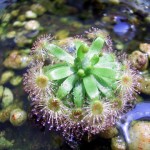


(more…)
WHAT ARE BYBLIS
Byblis is a beautiful plant that is also known by some as the rainbow plant. When placed in sunlight, its dew-covered stems and leaves sparkle with multicolor hues. In the absence of sunlight, its dews appear as frosted sprays of water. A true beauty and wonder of nature!



The plant has been associated with passion and Greek mythology. Byblis is the granddaughter of Apollo, who fell in love with her twin brother. When he rejected and fled from her, she wept bitter tears and turned into a fountain. Observing the plant closely, you’ll notice the gruesome sight of insect carcasses stuck on its dews: those gullible insects that were enticed by its beauty and promise of a moment’s bliss.
The plant has long narrow stems and thin, fine branches. The rainbow plant is a delicate plant that trails along the ground or lean on other plants for support. (more…)
WHAT ARE PINGUICULA
Pinguicula, or more commonly known as butterwort are carnivorous plants. The name in Latin means “little greasy one” that refers to the oily texture of the trapping surface of the leaf. Some carnivorous plant enthusiasts have grown so fond of their “little greasy one” that they affectionately call them “Pings”. They are fairly easy to grow and typically grow in a rosette fashion of a few inches in diameter.
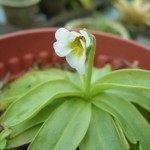
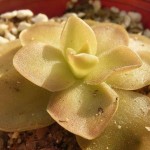

(more…)
WHAT ARE UTRICULARIA
Utricularia are carnivorous plant and they use an active trap mechanism to capture tiny insects and vertebrates. They are also called bladderworts and they make up the largest genus of carnivorous plants in the world.
There are terrestrial and aquatic species in this genus, meaning some species grow as water plants floating in shallow ponds of acidic water while others grow in acidic media. At a glance the Bladderwort plant looks like a normal unattractive plant. But it is the strange bladder-traps and beautiful flowers that attract the attention of carnivorous plant enthusiasts and make this oddity of nature so unique and attractive.
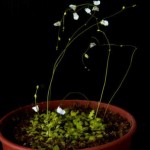
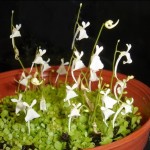
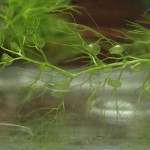
(more…)
WHAT ARE GENLISEA
Genlisea are related to Utricularia and Pinguicula and they grow as semi aquatic or terrestrial plants. They are also known as the Corkscrew Plant, referring to the odd traps that spiral into the ground like a corkscrew.
Corkscrew plants are small rosette plants about 1-3 inches in diameter with spade-shaped leaves. The flowers are small and pretty, and somewhat similar to the flowers of Bladderwort.
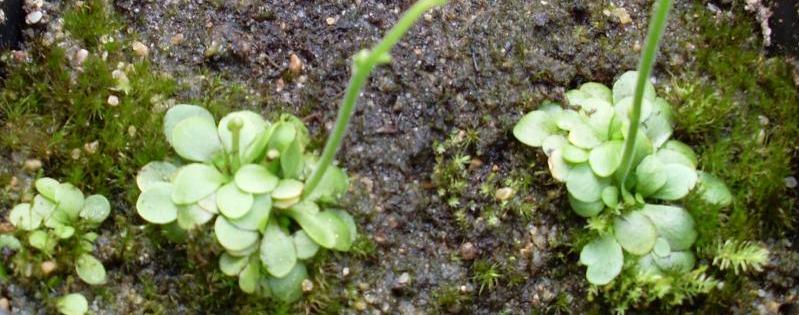
Picture by Adam Strath aka strath76 - Australia
(more…)
WHAT ARE DIONAEA MUSCIPULA
Dionaea Muscipula or more widely know as the Venus flytrap is one of the most famous carnivorous plant. Famous because it has an active trap that moves rapidly to capture insects. Many horror movies had their ideas of a giant man-eating plant from this amazing little plant.
Venus flytraps are perennial plants about 4-8 inches in diameter and they grow in a rosette form. There are basically red and green forms of this plant in nature, with the later being more common. There are also variations of green plants with reddish or pinkish color on the inside of its trap.
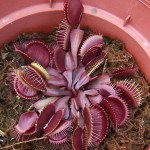

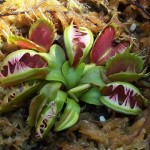
(more…)
WHAT ARE ALDROVANDA
Aldrovanda vesciculosa is an aquatic plant that floats just below the water surface. They are also called the Water Wheel Plant. As the name suggest the leaves and petiole grows around the stems so it looks like a water wheel. They are rootless and their stems are only about 4-6 inches long. The traps are very similar in appearance to that of its cousin, the Venus flytrap (Dionaea muscipula) that look like a clam. However, the traps of a Water Wheel Plant have long pointy bristles around its traps.



(more…)
Roridula
Roridula is native to South Africa and this carnivorous plant relies on an insect called assassin bugs or Pameridea to obtain nutrients. Assassin bugs are able to crawl about the leaves of the Roridula plant without being captured and these bugs make their homes on the leaves of this plant. The bugs feast on the captured prey of the plant by sucking the fluids of its victims. The feces of the bugs land on the leaves of the plant and are absorbed by the plant.

Roridula dentata... Picture by Ifurita, Singapore
Drosophyllum lusitanicum
Drosophyllum or more well known as the dewy pine is an odd carnivorous plant. It grows in Mediterranean climates in Spain, Morocco and Portugal. Its habitat is unlike that of other carnivorous plants where it grows on dry, alkaline coastal hills. Much like the Drosera it produces mucilage on its long, thin leaves and produces a heavy sweet aroma to attract nectar loving insects .
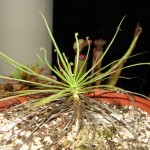
Drosophyllum, the dewy pine... Picture by Ifurita, Singapore
Brocchinia and Catopsis
Brocchinia and Catopsis belongs to the huge family of Bromelaids and are found in tropical and subtropical regions of the Americas. The leaves grow upright from the main rosette forming a tank at the base of the leaves where rain water is collected. Leaf debris and insects occasionally drop into this tank of water. The plant absorbs the nutrient rich water from the decomposing leaf debris and insect.
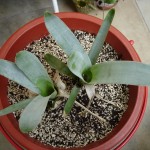
Brocchinia reductata, a carnivorous Bromeliad... Picture by Ifurita, Singapore
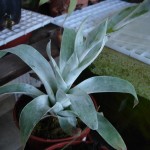
Catopsis berteroniana, another carnivorous Bromeliad... Picture by Ifurita, Singapore
This category is meant to be an archive of links, information and articles with regards to carnivorous plants in general. The information here will be updated from time to time.
For information of individual species, go to the respective species pages by clicking on the species name in the navigation bar just below the PetPitcher masthead.




































